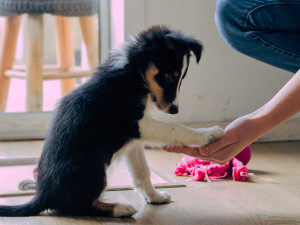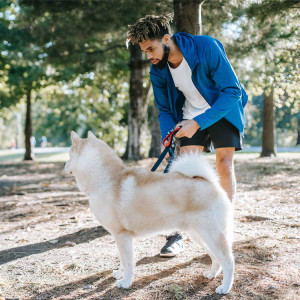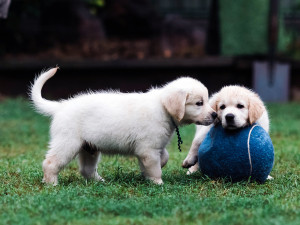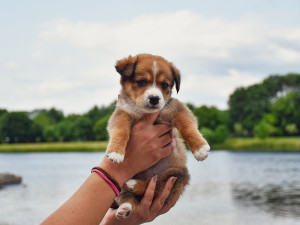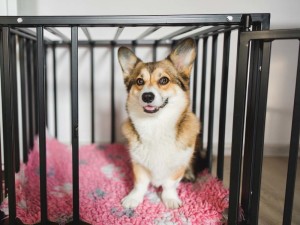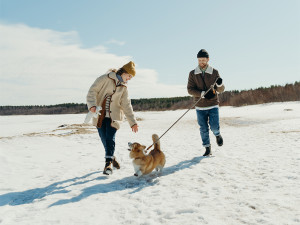Puppy Training 101: How to Train a Puppy
You and your cute classmate have lots to learn
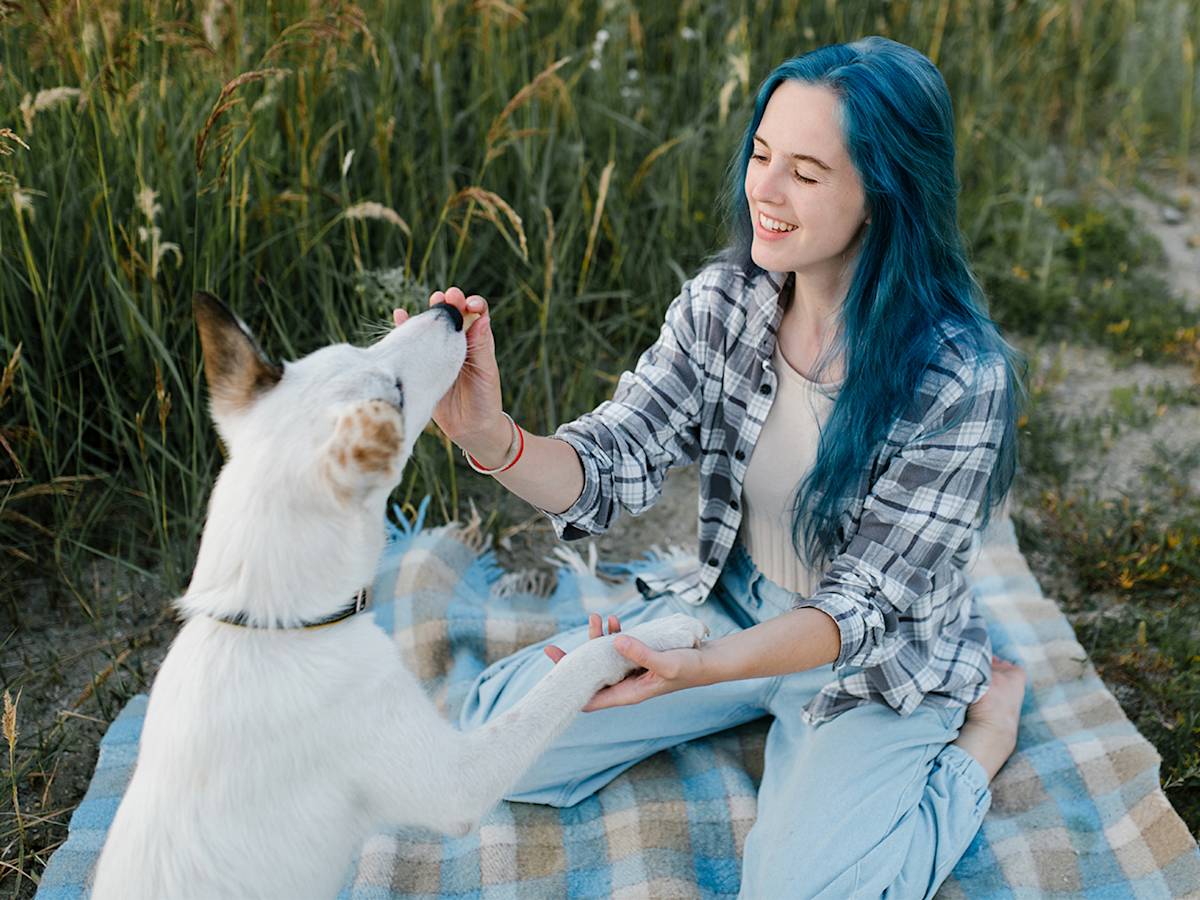
Share Article
Kick-starting a puppy training regime can be a steep learning curve – often more so for you than your dog. The rise of virtual training sessions has been a godsend to many new pet parents, but for others, in-class dog obedience training is a great place to start. Pick the method that is best for you and your pup. Keep reading for our puppy training tips. Heads up: we recommend a clicker for this class.
How to train a puppy
There’s nothing more fun than training a new puppy and watching them experience everything for the first time. Ready to get started? Here are your seven puppy training essentials:
1. Puppy-proof your home
If you give your pup free rein, you will regret it later, trust us. Before you start puppy training, set boundaries early on to avoid breaking bad habits later. You can do this by puppy-proofing your home: keep countertops clear, cover rubbish bins, hide cords and cables, lock cabinets and hide shoes and other valuables away from puppy teeth. Baby gates can also help create a puppy-proofed labyrinth. Once they earn your trust, you can start taking down barriers.
2. Reward good behaviour
With bad choices off the table, it’s time to teach puppy training obedience. This starts with positive reinforcement. Condition your pup to understand what behaviours you want them to repeat by rewarding them for their behaviours. Use a marker, like the word ‘yes’ or the click of a clicker, to pinpoint the exact moment they do something you want to encourage. Then, taking a page from Pavlov, follow your marker with positive reinforcement (treats are your most valuable currency). Click, treat, repeat. In no time, your dog will practically be salivating the second they hear your mark. Pro tip: this method also works when training your puppy not to bite.
3. Teach them to focus
If you’ve ever zoned out during a Zoom call and then suddenly been called on to answer a question, you know that winging it when caught off guard doesn’t always work. Likewise, when your dog is distracted they aren’t going to perform well. Teaching them to focus on you and give you their full attention is an essential puppy training command.
Find a quiet area in your home, stand just as quietly (with treats ready and hidden) and simply wait for your dog to look at you. The second they do, give them a mark-and-treat one-two punch. When your puppy has figured out the power of a glance, you’ll be in for plenty of hungry stares. Once your dog masters this staring contest, try out this trick in places with more stimulation, like in your garden. And so on and so forth.
4. Teach your pup lead manners at home
Your mouth waters watching M&S adverts, so imagine how ravenous your dog feels when every walk is a buffet for their keen doggo nose. Walking at a heel calls for an incredible amount of self-control for a dog but is a must for your sanity and their safety.
Keeping outside distractions in mind, start lead training your puppy at home. It’s not required but you could get a puppy training lead – such as a well-fitted harness with a back attachment point that isn’t too restrictive. Lead them up and tell them to sit parallel to you. Say, “Let’s go”, mark, and treat. Timing is everything. Every step that follows, so long as they stay by your side, should be rewarded. If – rather, when, because it will happen – your pups pulls, don’t chastise them; just stop, turn around, and wait for your dog to get the hint and check in with you. Again, once they get the hang of it, you can take it outside and practice irl.
5. Train your dog to come when you call
Not to be dramatic but recall training can save your dog’s life. If you have a fenced-in garden, great. If not, use a 20-foot training leadopens in new tab in a distraction-free zone. Pick a cue, either ‘come’ or ‘here’, and start by saying it when your puppy is only a few feet away. When they come to you – you know the deal – mark and treat.
Gradually increase the distance by stepping back further and further, cueing your pup to follow. Having a dog that’s on-call means that you can trust them to swiftly return to you in case of emergency, like if they get spooked and slip their collar on a busy road, or a fight breaks out with another dog and you want them out of harm’s way.
6. Teach your pup to stay
Nailing the ‘stay’ command ensures your dog’s (and your postie’s) safety. Like a good true-crime show, it’s all about the build-up which just means telling your dog to stay, counting a few seconds in your head, then marking and treating before releasing them from the command with an “OK!” Put this routine on repeat, increasing the time before treating until you hit 30 seconds, then add some distance to the equation.
Once they’ve mastered the basic command, level up by walking in a circle around your dog, leaving the room or, the ultimate test, bring out the vacuum cleaner. Don’t get frustrated if your pup snaps out of ‘stay’ – this kind of mind control isn’t going to happen overnight. Trusting them to remain motionless until you give them the green light is a process, but one that’s worth it in the long run.
7. Desensitise them to being handled
The power of positivity isn’t just a self-help mantra, it’s also key for making your dog comfortable with you (and vets and groomers) handling sensitive body parts like paws and ears. Show your dog that they’re in good hands by pairing touch with treats. Gently hold your pup’s paw and give them a treat. You can eventually work up to a nail trimmer – just not on day one. Baby steps!
How long does it take to see results?
Everything is a learning experience for dogs, but it’s a good idea to spend a few days a week dedicated to formal dog training. The ideal puppy training plan will depend on you and your dog. Some trainers find that shorter sessions are more effective than longer sessions. In a study on dog training frequency, researchers foundopens in new tab that dogs trained one to two times a week learnt a new behaviour faster than dogs trained daily. Consistency and play training also play big roles in how quickly dogs learn new behaviours.
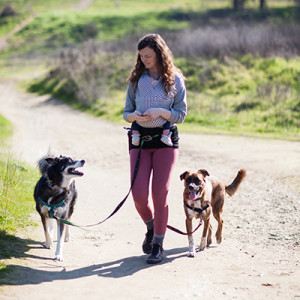
Tressa Fessenden-McKenzie, KPA-CTP
Tressa Fessenden-McKenzie, KPA Certified Training Partner and Family Paws Parent Educator, is the founder of Path and Paw and a training advocate on Dogly.
Related articles
![Two Golden Retriever puppies playing with a large blue tennis ball outside in the grass]()
What to Expect At Puppy Socialisation Classes
A dog behaviourist schools us on why puppy classes are more about socialising than getting straight As
![Border Collie puppy shaking owner's hand]()
The Go-To Training Schedule For Your Puppy
Your puppy training schedule, from eight weeks to six months. Let’s do this
![Two hands holding a very young tan and white puppy up in front of a lake landscape]()
How to Socialise a Puppy
Everything you need to know to get your new addition off to a good start
![Three dogs on leashes meeting and sniffing each other on a walk on the summer grass with owners]()
How Do I Get My Shy Dog To Socialise?
Dog trainer Robert Haussmann’s tips for getting a shy pup to go from wallflower to social butterfly
![Smiling Welsh Corgi Pembroke dog sitting inside an open crate]()
How to Crate Train a Puppy
Effective techniques to crate train your dog with ease
![A happy looking man and woman walking their dog outside in a large snowy field.]()
10 Ways to Make Your Dog’s Life Better
Simple resolutions to boost your dog’s happiness, health and well-being all year long

